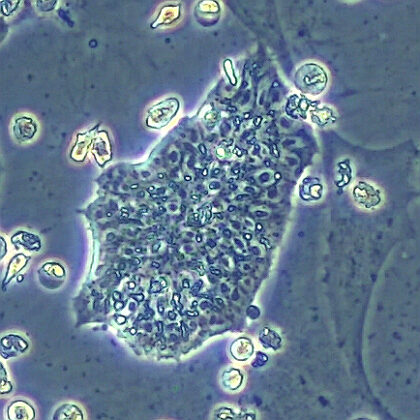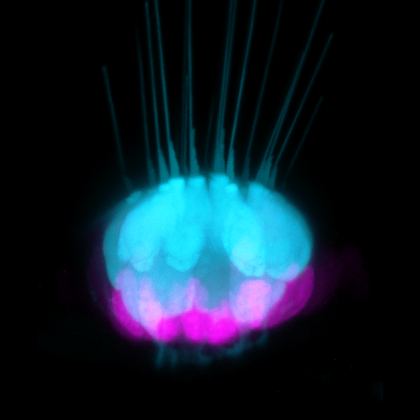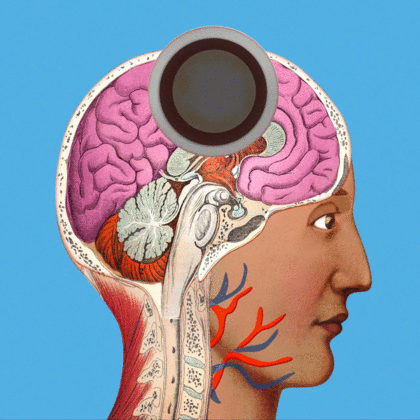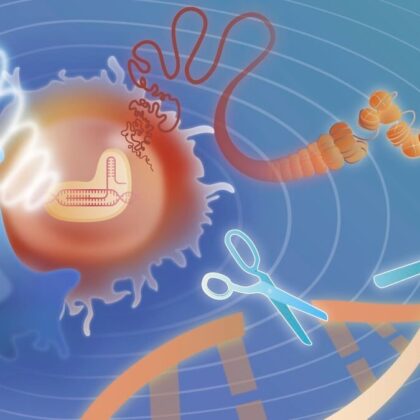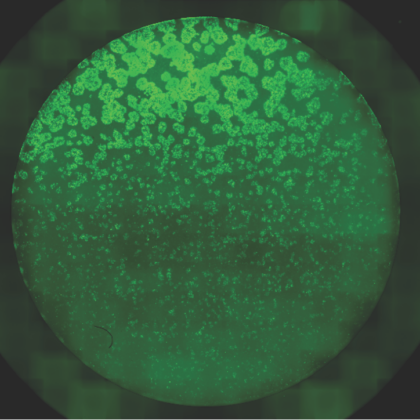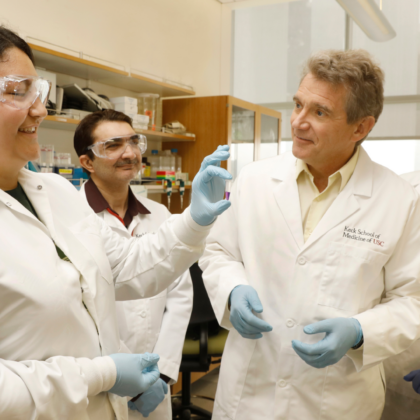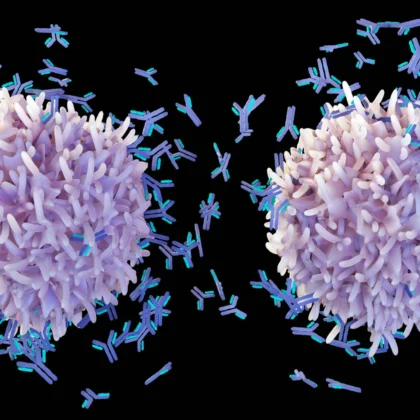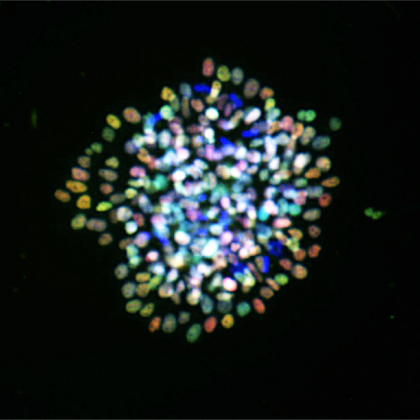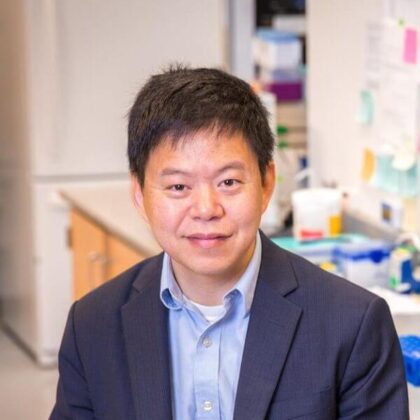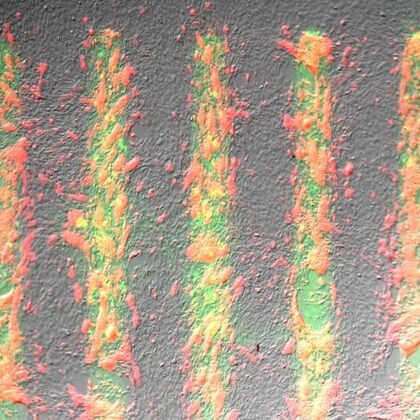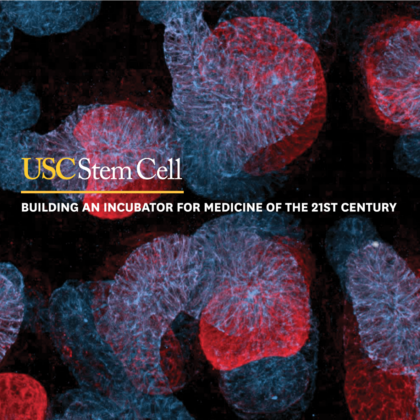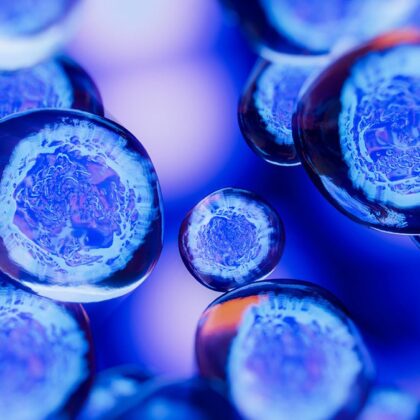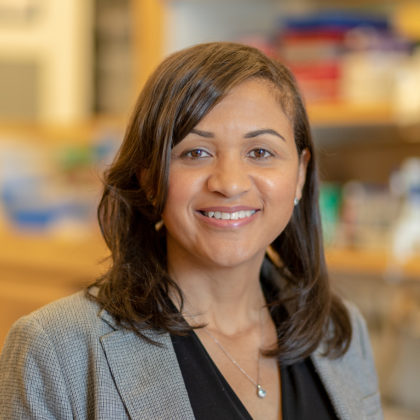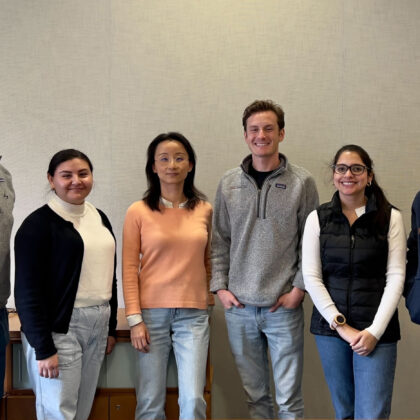Next-generation CAR T cells could expand solid cancer treatment options
Using cell cultures and animal models, researchers from the USC Norris Comprehensive Cancer Center at Keck School of Medicine of USC showed that innovative ways to further engineer CAR T cells can …
USC Stem Cell-led study generates authentic embryonic stem cell from birds
Scientists discover that egg yolk is a key to establishing authentic embryonic stem cells from chickens and seven other avian species, as reported in Nature Biotechnology. Egg whites may be perfect for …
Meet USC’s CIRM Scholar Alumni: Suhasni Gopalakrishnan, Director at Allogene Therapeutics
“I feel like I’m a person who goes with the flow,” said Suhasni Gopalakrishnan, Director at Allogene Therapeutics in San Francisco. Going with the flow has led Gopalakrishnan to many fascinating places. …
New nanoparticle weapon in the fight against cardiovascular and kidney disease
The Chung Lab has engineered a new therapeutically enhanced, naturally derived particle for powerful gene therapies to tackle our most significant health challenges. Cardiovascular disease and kidney disease are two of the …
USC team develops a powerful new analytical tool to advance CAR T cell therapy research
The comprehensive analytical platform uses laser technology to analyze CAR T cells and has already revealed ways to optimize their manufacturing, including how to identify when CAR T cells are likely to …
New “smart” immune cells: A breakthrough for long-lasting tumor destruction
USC Viterbi researchers have engineered a new immune cell that when activated by ultrasound can continuously sense and destroy cancer cells for extended periods. Imagine a super-charged immune cell that can launch …
USC Stem Cell study breaks the silence on how fish and lizards regenerate hearing
A new USC Stem Cell study published in the Proceedings of the National Academy of Sciences (PNAS) has identified key gene regulators that enable some deafened animals—including fish and lizards—to naturally regenerate …
Cell by cell: Rebuilding the body
USC researchers are revolutionizing how we treat disease by harnessing stem cells as “living medicine.” Anyone who’s healed from a cut or a scrape has witnessed the incredible regenerative power of stem …
New CRISPR toolkit to allow remote-controlled genome editing
USC Viterbi biomedical engineers harness focused ultrasound to revolutionize CRISPR’s capabilities to treat countless diseases. Thanks to CRISPR, our medical specialists will soon have unprecedented control over how they treat and prevent …
By exerting “crowd control” over mouse cells, scientists make progress towards engineering tissues
Genes aren’t the sole driver instructing cells to build multicellular structures, tissues, and organs. In a new paper published in Nature Communications, USC Stem Cell scientist Leonardo Morsut and Caltech computational biologist …
Chuck Murry: Stem cell science for healing the heart
Success in Chuck Murry’s vision for regenerating heart tissue to restore function after a heart attack would look like a radical shift in the medical landscape. Ironically enough, he chalks up his …
USC researchers turn the body’s B cells into tiny surveillance machines, antibody factories
The technology could be used to treat or prevent chronic diseases or infections such as HIV. USC scientists have discovered a way to turn the body’s B cells into tiny surveillance machines …
USC scientist Paula Cannon takes the reins as president of the American Society of Gene and Cell Therapy
Paula Cannon, a Distinguished Professor at the Keck School of Medicine of USC, heads the world’s largest organization devoted to developing next-generation therapies that address the underlying causes of disease. USC geneticist …
USC-led study introduces a new and improved way to grow the cells that give rise to the kidney’s filtration system
In a new study published in Cell Stem Cell, USC scientists report significant progress in cultivating nephron progenitor cells (NPCs), the cells destined to form the kidney’s filtration system, the nephrons. NPCs …
Turning a tumor’s “shield” into a weapon against itself
USC Viterbi biomedical engineers have designed a new protein that targets and disables tumor cells’ defenses while marking cancer cells for death. Tumor cells are “cunning,” according to Peter Yingxiao Wang. They …
A green light to build muscle cells on command
It may sound like something from science fiction. To grow and modify muscle tissue in the lab using technology that shapes the muscle cells, blood vessels and nerves into whatever pattern you …
Building an Incubator for Medicine of the 21st Century
USC Stem Cell is pleased to introduce our new publication. We hope you’ll enjoy reflecting back on our history, while looking ahead to the transformative times to come. Read now at https://stemcell.keck.usc.edu/wp-content/themes/stemcell/incubator.
$2 million grant boosts technological advancements in cutting-edge cell therapy manufacturing facility
The Keck School of Medicine of USC has received $2 million from the California Institute of Regenerative Medicine (CIRM) to further augment its newly launched cGMP Laboratory, a state-of-the-art facility designed to …
Senta Georgia reflects on Title IX and becoming the first Black PhD scientist to earn tenure at the Keck School of Medicine of USC
When USC Stem Cell researcher Senta Georgia was granted tenure on March 10, 2023, she became the first Black PhD scientist to earn this promotion in the history of the Keck School …
Why does a leukemic mutation not always lead to leukemia? A new clue from a mouse study at USC
Why do some people with a genetic mutation associated with leukemia remain healthy, while others with the same mutation develop the blood cancer? In a new study published in Blood, scientists from …

